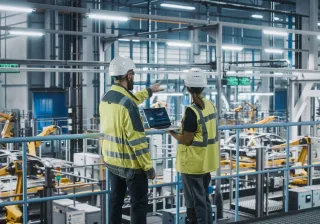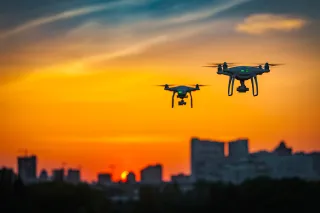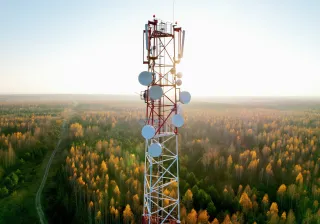Over the past decade, we have seen initial progress in driving the transition towards a more sustainable world. At the same time, sustainability has become more complex, and companies all over the world are exploring their path towards sustainability, while maintaining an economically successful operation. As a result, sustainability has become critical for both public and private organizations.
Sustainability has become a C-level priority, as customer demand, regulatory developments and the broader societal discourse require companies and public organizations to focus on the transition towards a sustainable economy. As lead, sustainable business at VTT, I am looking to utilize our leading research and development activities to help companies and public organizations on their path towards sustainability by jointly leveraging the impact of our insights and expertise. To do so, I am looking to utilize my 25-year experience in management and strategy consulting, having worked throughout the years on the intersection between business, technology and sustainability.
The shift towards sustainability has significantly changed the operating environment for both public and private organizations. While companies need to address heightened sustainability requirements in their products, services and operations along the end-to-end value chain, public organizations need to focus on building a level playing field while providing the right “carrots and sticks” for consumers and companies alike. We have seen significant developments, but the path ahead stays difficult to navigate and companies and public organizations are looking for support in understanding, interpreting and mapping out the right direction for their organization.
The power of foresight and data
As the operating environment is becoming more and more complex, organizations are looking to understand and navigate their path towards a successful future. In this context it’s not always easy to separate the important from the background noise, which is why a solid, data-based understanding of the operating environment as well as one’s own operations combined with a good comprehension of relevant future trends and developments is critical.
Traditionally, the leadership of organizations would take a limited amount of often historic data to outline future scenarios that intended to model the backdrop for the future development of the market, operating environment and the organization itself. In today’s fast paced world, such models are often too slow and limited to truly guide an organization’s decision-making process. Instead, organizations are looking at more dynamic and holistic models that depict current and future developments based on a wide array of data points that are collected from within and outside the organization. Strategic Foresight, data-enabled decision making, and system dynamic modelling are in this context only some of the tools that can help organizations in developing the required understanding of the future to guide their strategic direction.
While data is a critical element in outlining and shaping an organization’s future direction, it’s not all data that’s relevant. Identifying the most relevant data requires an in-depth understanding and the contextualization of the collected data points both when looking at current and historic data as well as when outlining foresight driven future scenarios. As such, organizations are relying on their own as well as outside expertise to develop the before mentioned data-enabled map for navigating their future.
Utilizing VTT’s capabilities to drive broader impact
Companies and public organizations are struggling to navigate the complexities and rapidly changing operating environment, and therefore are looking for outside help and expertise in developing and understanding a clear direction for their organizations. As a result, research and development of novel, new solutions and technologies is gaining importance, requiring a close cooperation between the science and research community on one hand and public and private organizations on the other, to enable the transition on organizational, societal and system level. At VTT, we are uniquely positioned to work in the development of new solutions while enabling their application in the context of businesses and societies around the world.
With more than 2.000 people working on the leading-edge topics of our times, from smart energy and buildings to circular material flows, and beyond, VTT is well positioned to work with organizations in providing them with unmatched insights and experiences to help them guide their way. Combining these exceptional capabilities with the passion of VTTers to create impact, there is a remarkable opportunity to enable the transition towards a more sustainable and fairer world.
Michael Hanf has 25 years of experience in technology and business strategy. The last 10 years he has been working on the intersection of business, technology and sustainability with companies and public organizations in Finland and Germany. Michael works at VTT as lead, sustainable business.
Listen to 'The Circular Coffee Break' on Spotify
A podcast about all things circular economy and beyond









